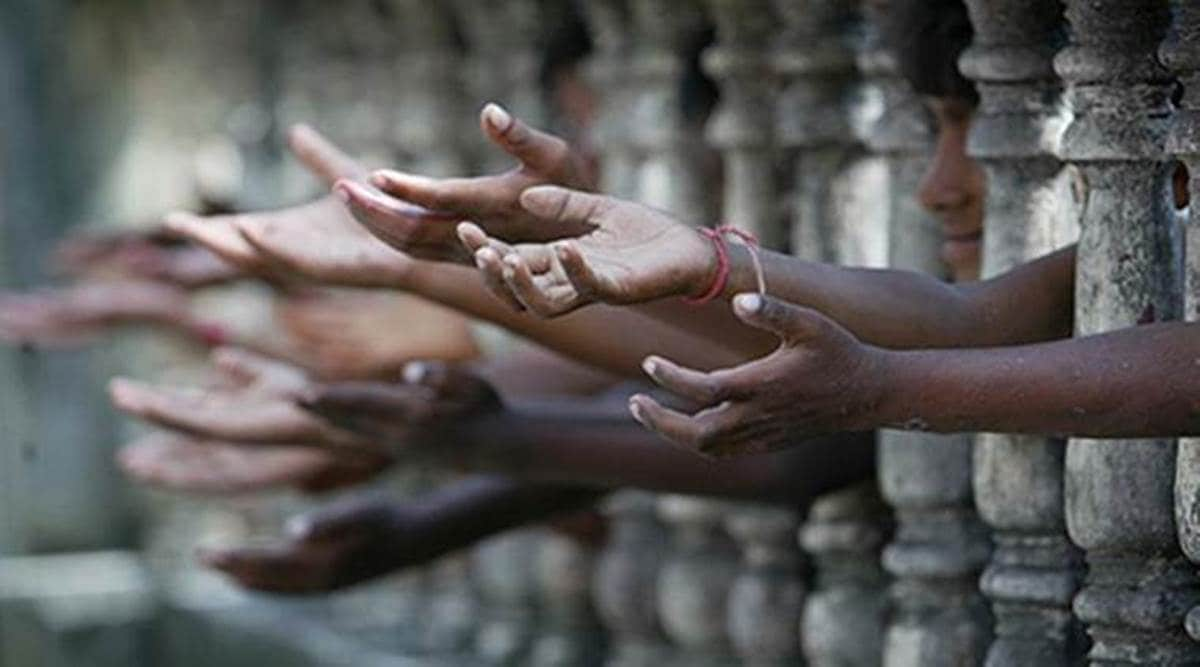 Such high incidence of malnutrition was recorded last during 2020, when the national lockdown affected nutrition programmes across the state. (Representational/File)
Such high incidence of malnutrition was recorded last during 2020, when the national lockdown affected nutrition programmes across the state. (Representational/File)A recent screening on malnutrition, conducted by the Maharashtra government between June and July this year on children below the age of 6 in tribal-dominated Nandurbar district, has shown that close to 15 per cent of children in the sample group were identified as malnourished. This is a substantial spike over the previous survey conducted in May, in which only 7 per cent children were identified as malnourished.
The district collector, in a written response to the core committee appointed by the state government, has claimed that this spike in the number of malnourished children is because a number of these children migrate during monsoon to places outside the district along with their families, which affects their nutritional intake.
The state appointed core committee was formed in 2018 in response to a PIL filed by activist Bandu Sampatrao Sane regarding malnutrition in tribal areas.
The committee annually addresses issues of nutrition among children and mothers in 16 districts of the state that have high tribal populations.
Data available with The Sunday Express shows that in May, a total of 1,76,393 children aged up to six years were screened in six blocks of Nandurbar, of which 12,255 — 6.95 per cent of the total sample size – were identified as malnourished. As many as 1,397 or 0.79% were identified with severe acute malnutrition (SAM) while another 10,858 or 6.16% children were identified with moderate acute malnutrition (MAM).
In June-July, the number of malnourished children shot up substantially, even though the sample size of surveyed children reduced. Of the 1,60,504 children surveyed, 23,515, which is 14.65 per cent of the total sample size, were found to be malnourished. The detection of SAM surged to 3,554 or 2.21 per cent children. A total of 19,961 or 12.4 per cent of them were detected with MAM.
Such high incidence of malnutrition was recorded last during 2020, when the national lockdown affected nutrition programmes across the state.
The World Health Organisation (WHO) referred to malnutrition as deficiencies, excesses, or imbalances in a person’s intake of nutrients. It defines SAM by very low weight-for-height or a mid-upper arm circumference (MUAC) less than 115 mm, or by the presence of nutritional oedema. MAM, also known as ‘wasting’, is detected when the MUAC is greater or equal to 115 mm and less than 125 mm.
After submission of the report – ‘Rapid assessment of Child and Maternal health’, Nandurbar District Collector Manisha Khatri submitted a compliance report this week, where seasonal migration of the children is attributed for the concerning figures. “The families migrated from Nandurbar districts along with their children from the month of October to April-May. As they return, we conduct a special screening drive for nutritional assessment. Hence, the number of malnourished children increases,” reads the letter.
However, advocate Bandu Sane and Latika Rajput, a member of the core committee, also blamed the lack of facilities and healthcare accessibility as the reason for high incidence of malnutrition in the region.
“Nandurbar is a hilly region where accessibility of healthcare is the biggest challenge. The existing anganwadi centres remain closed, the primary health centres lack infrastructure and nutrition schemes aren’t implemented adequately,” said Sane.
Ravi Duggal, a health-finance expert who in the 1990s had conducted a study in Nandurbar on the co-relation between malnutrition and availability of work, found that in places where work MGNREGA work was limited, the incidence of malnutrition was higher.
“People in Nandurbar have very less cultivable lands so people are demanding work. If they don’t get work under MGNREGA, they have to migrate to other states for work in the summer. Sometimes, the parents take their children with them or leave them back in the village with the elderly. But in both cases, their nutrition intake gets compromised,” said Duggal.